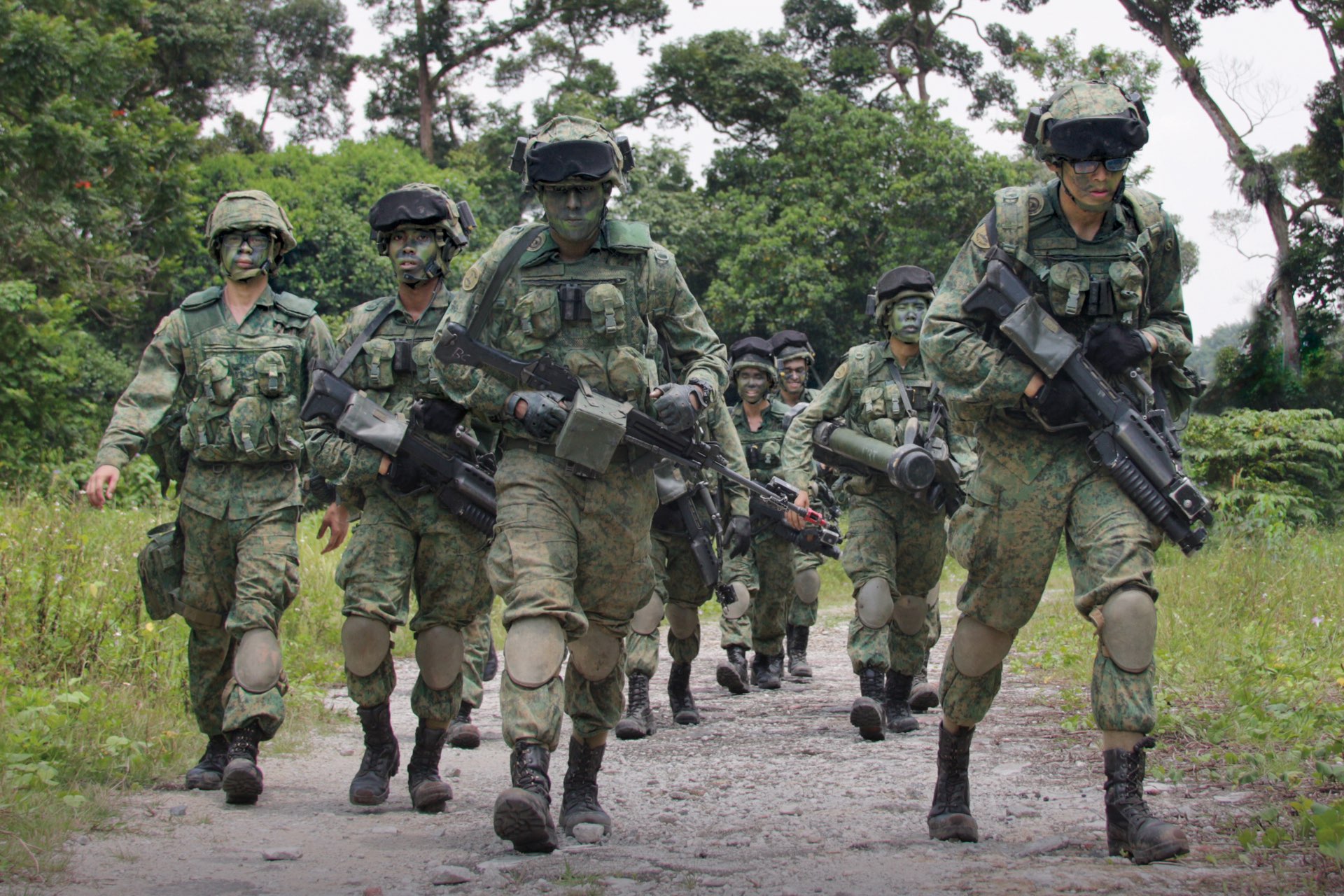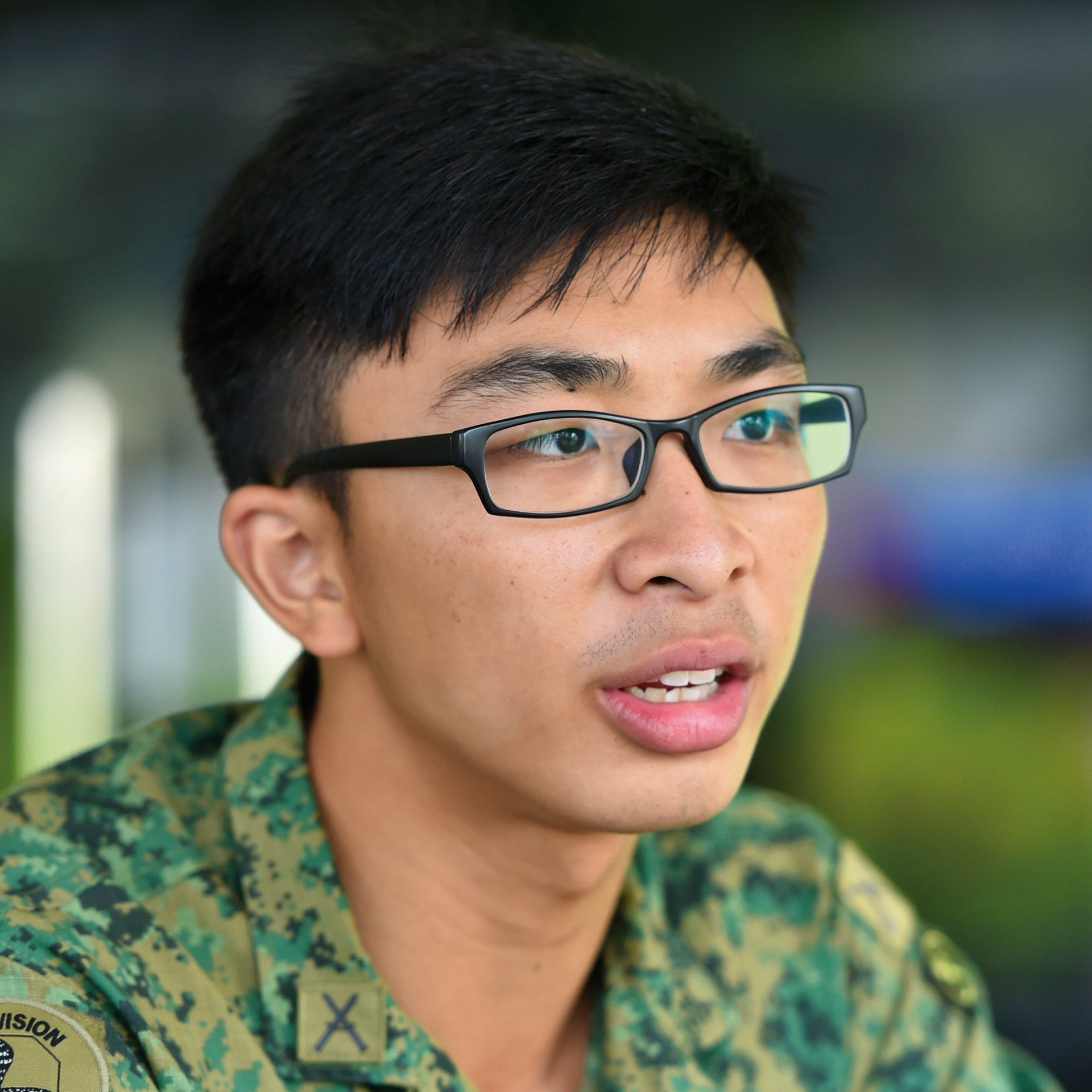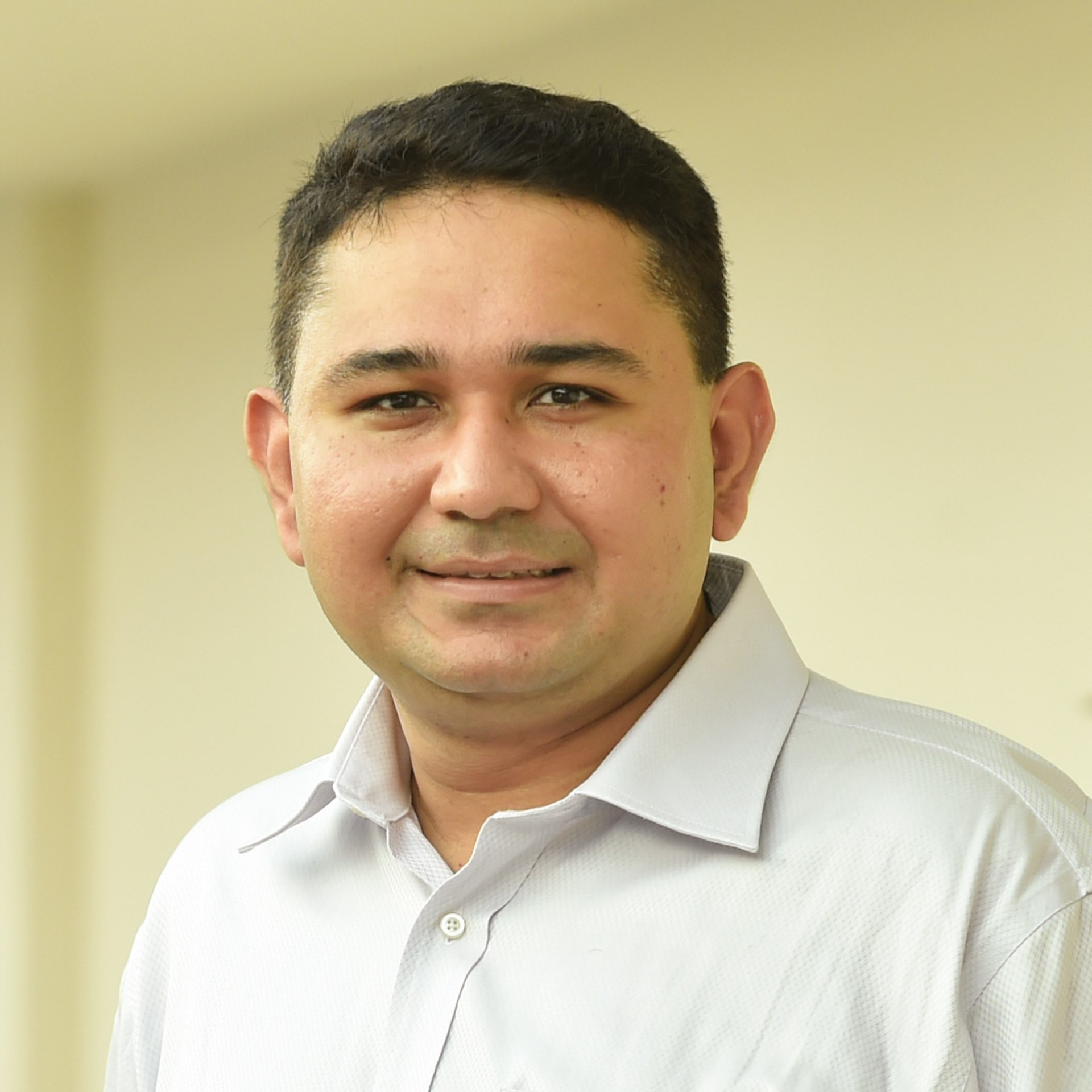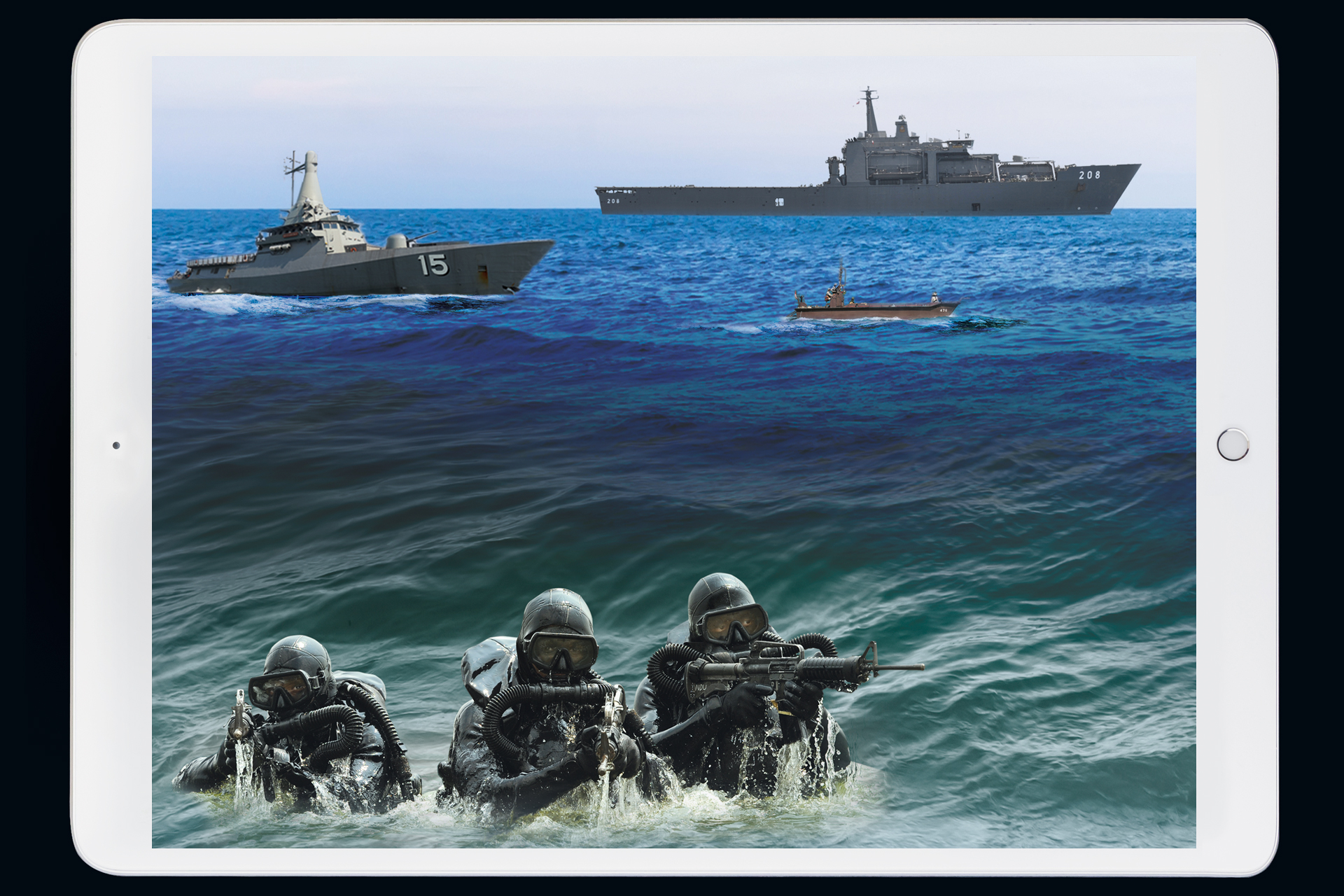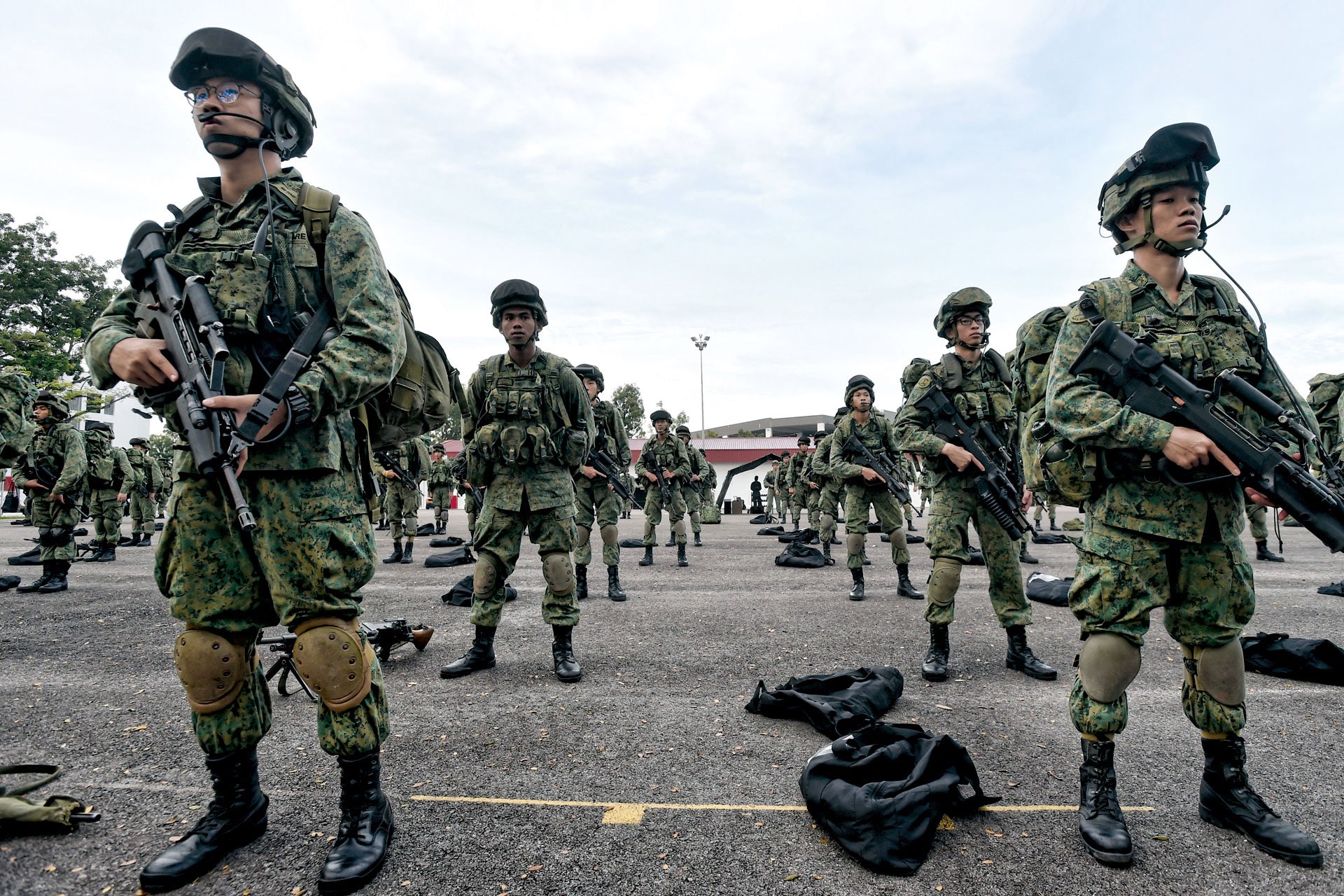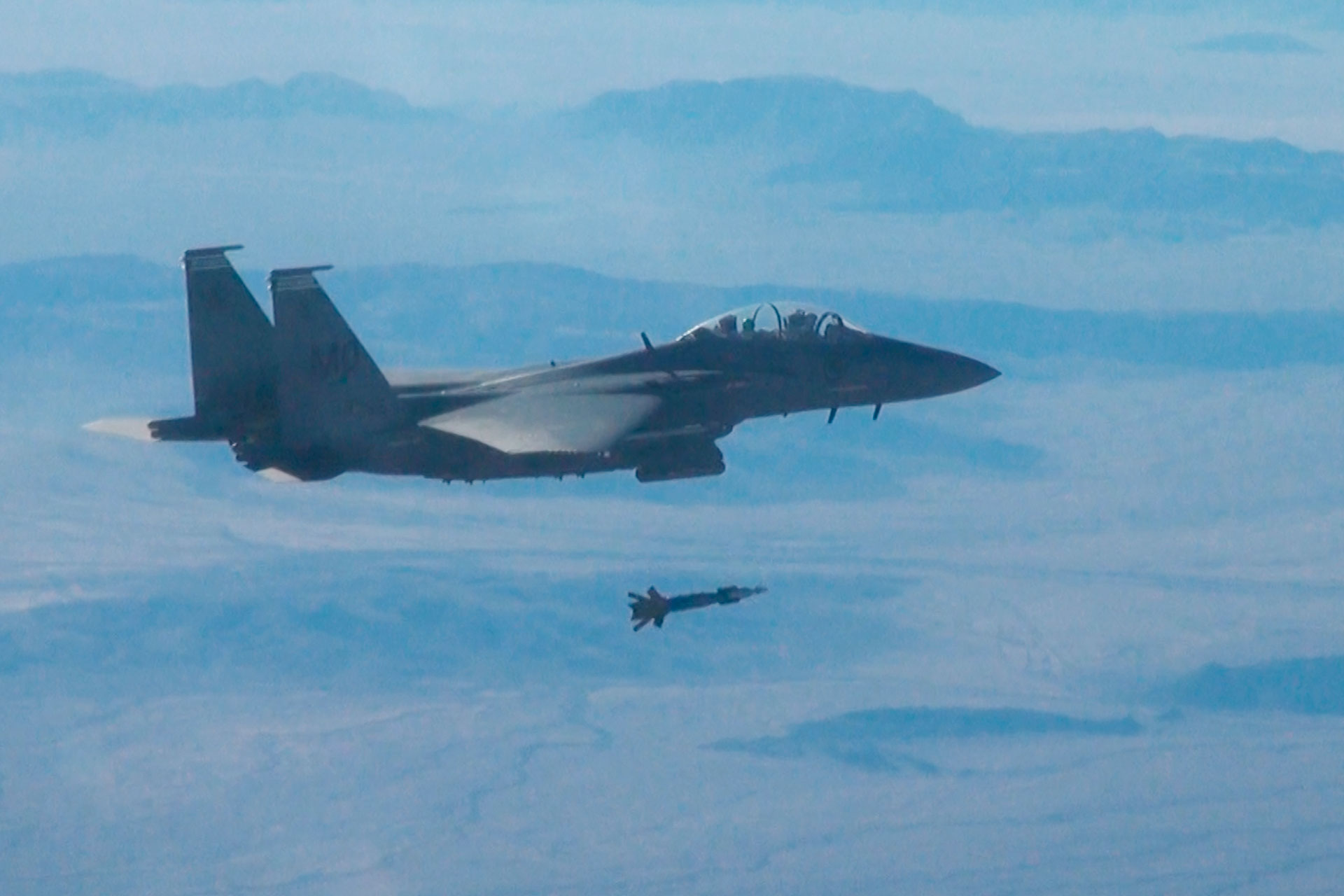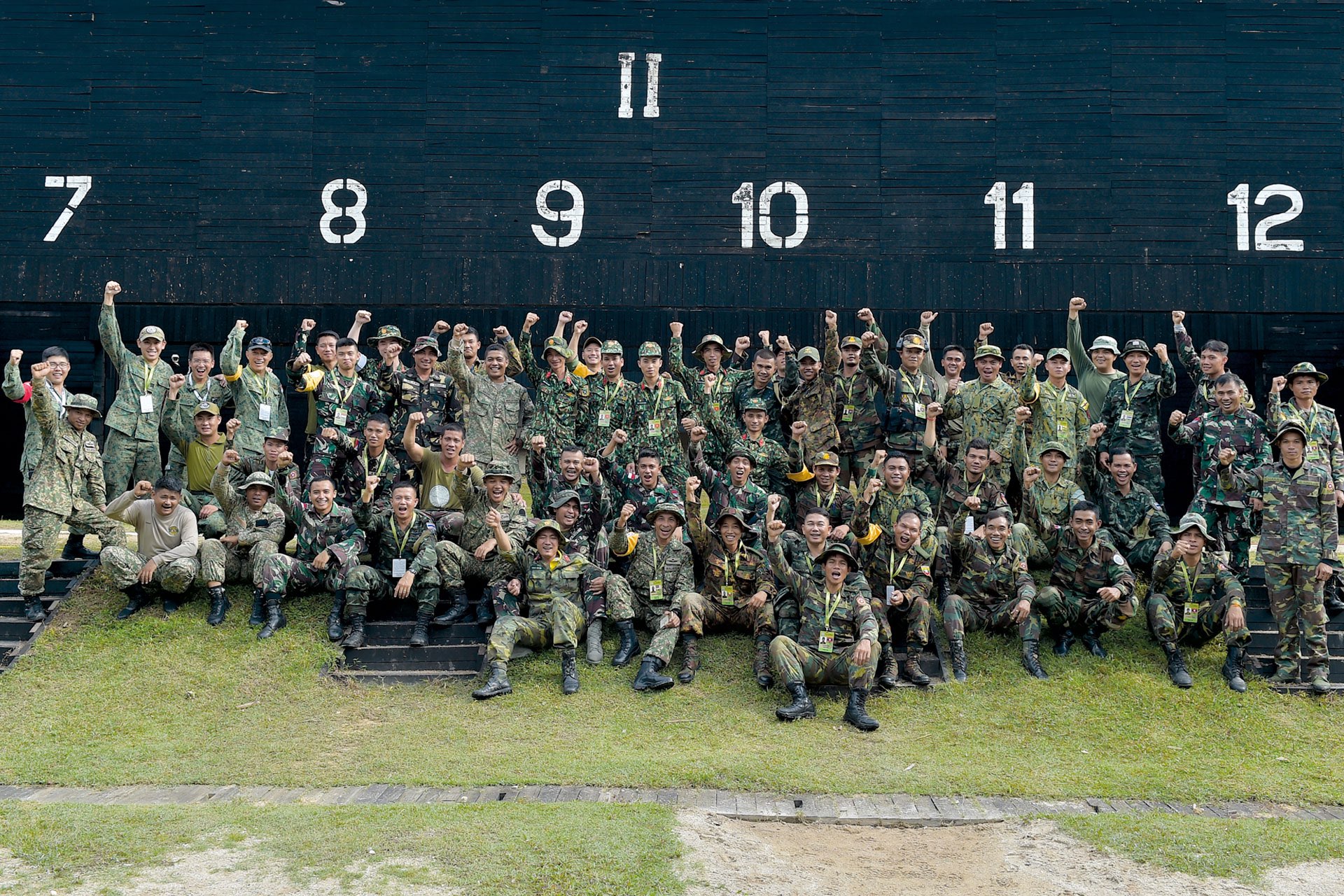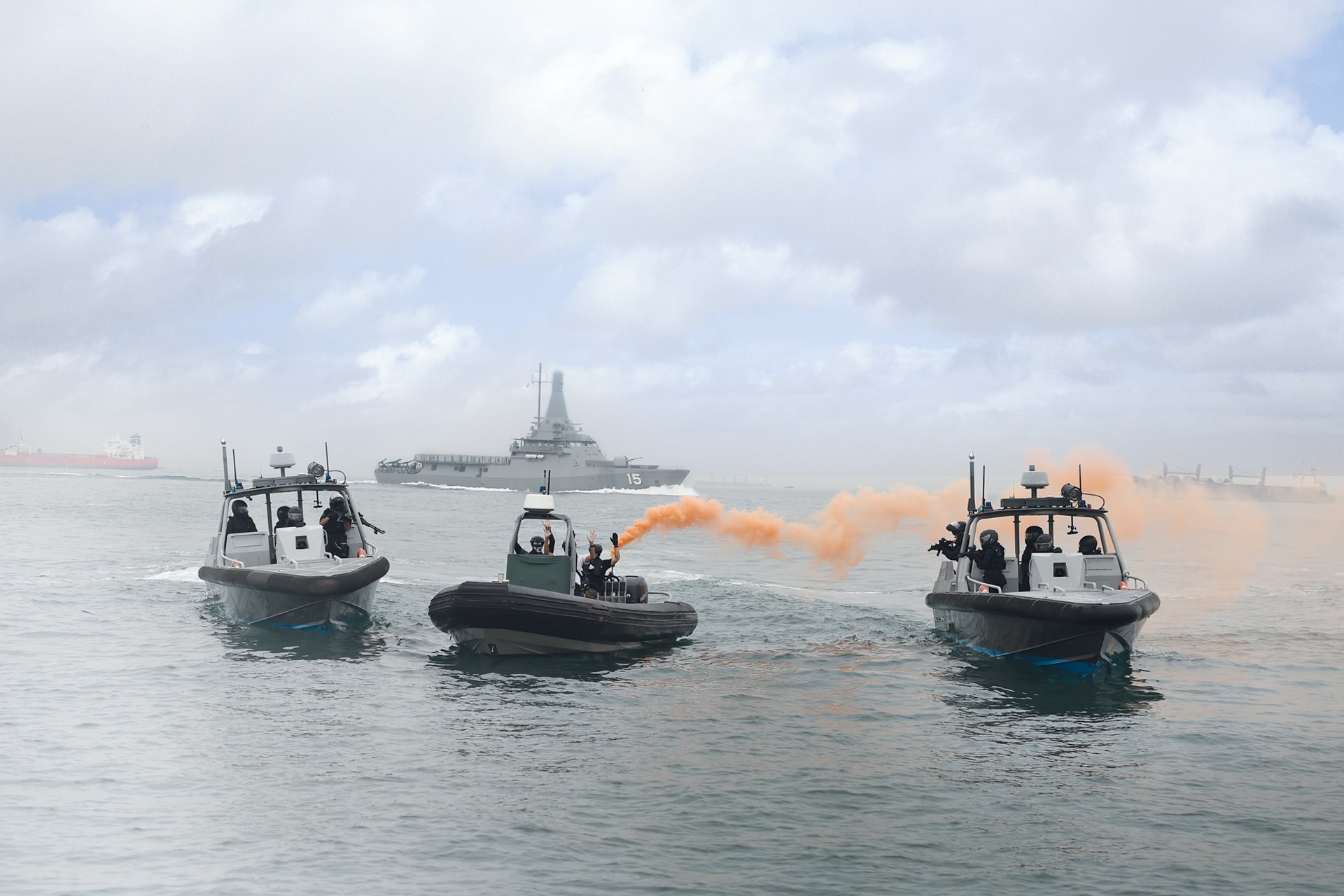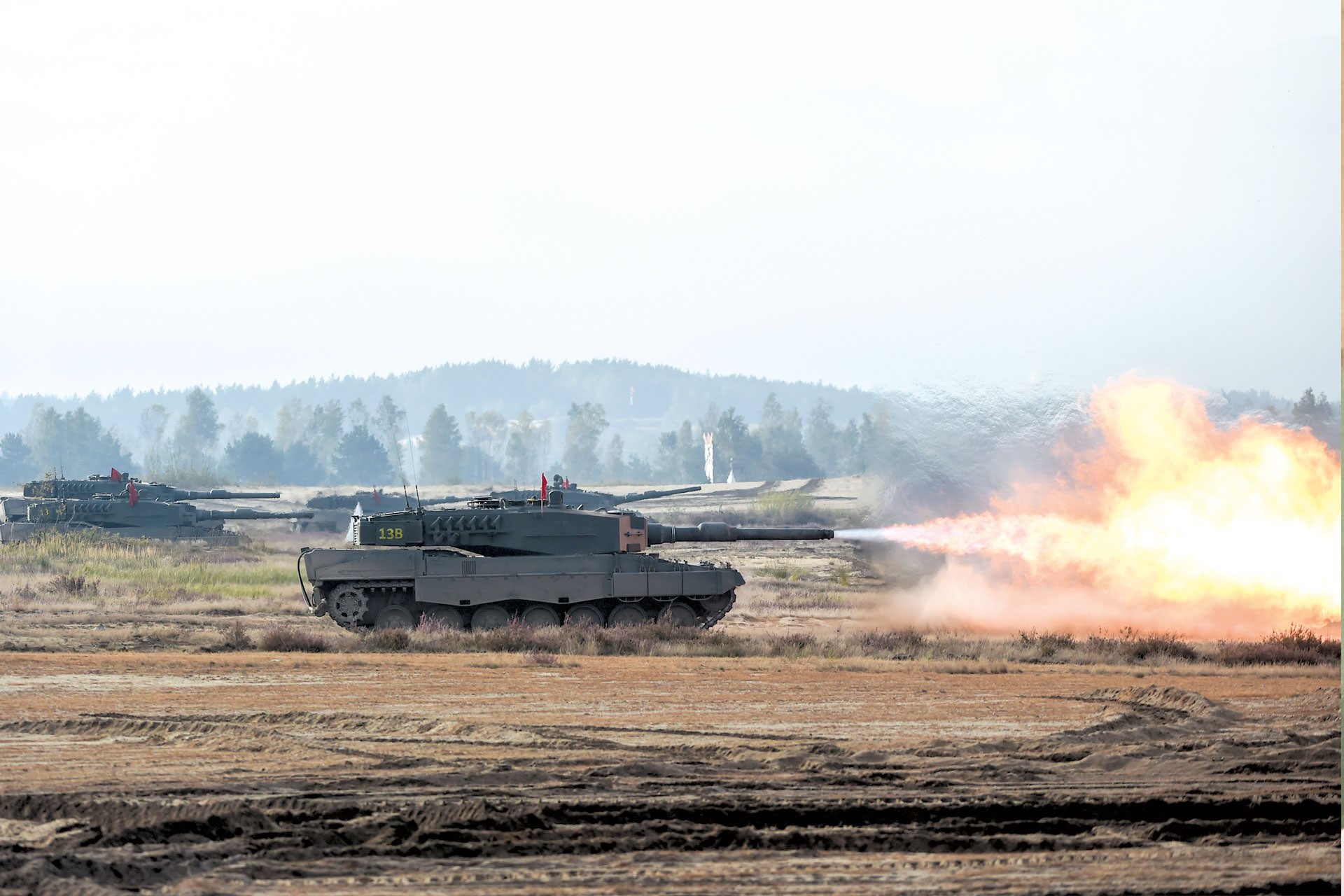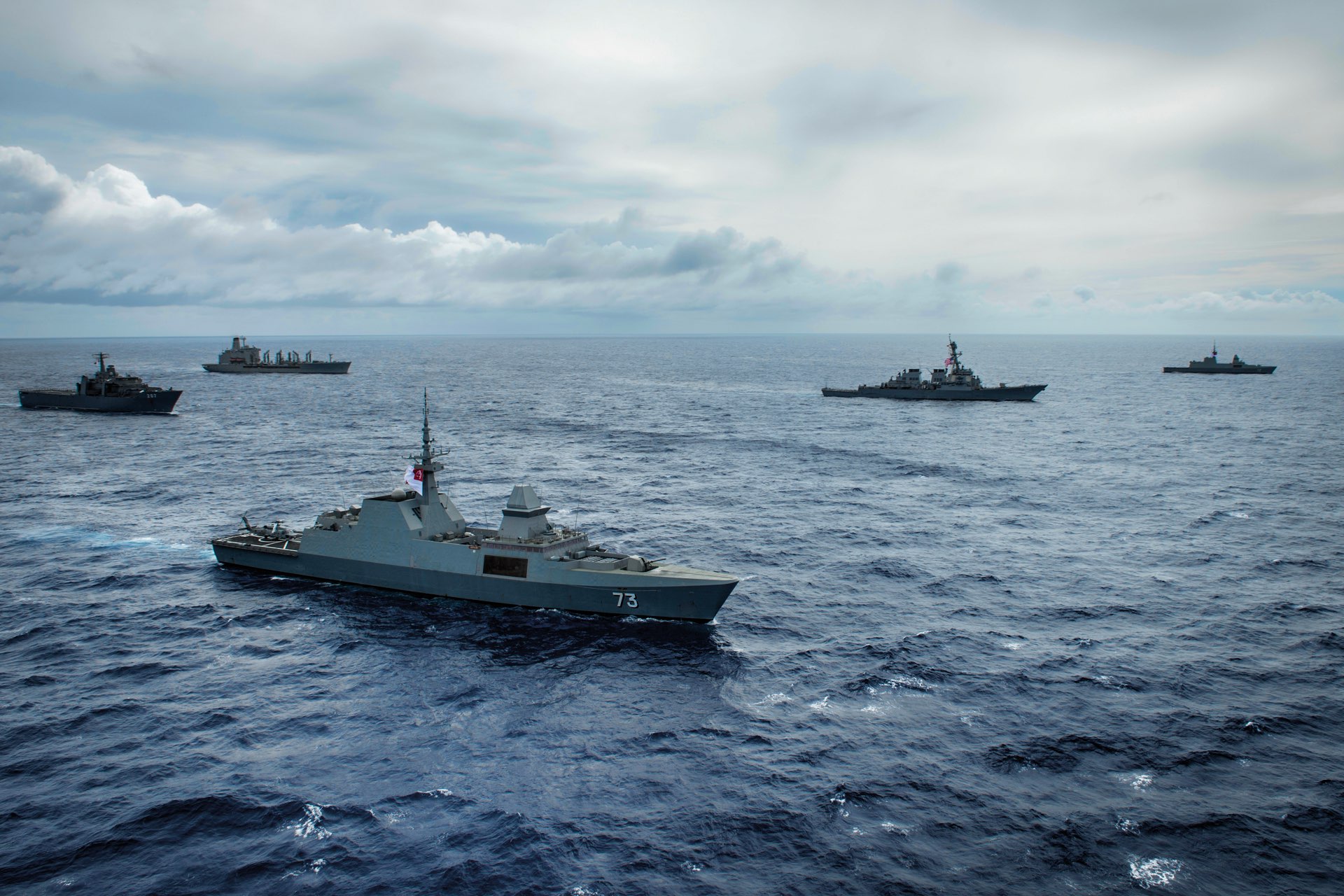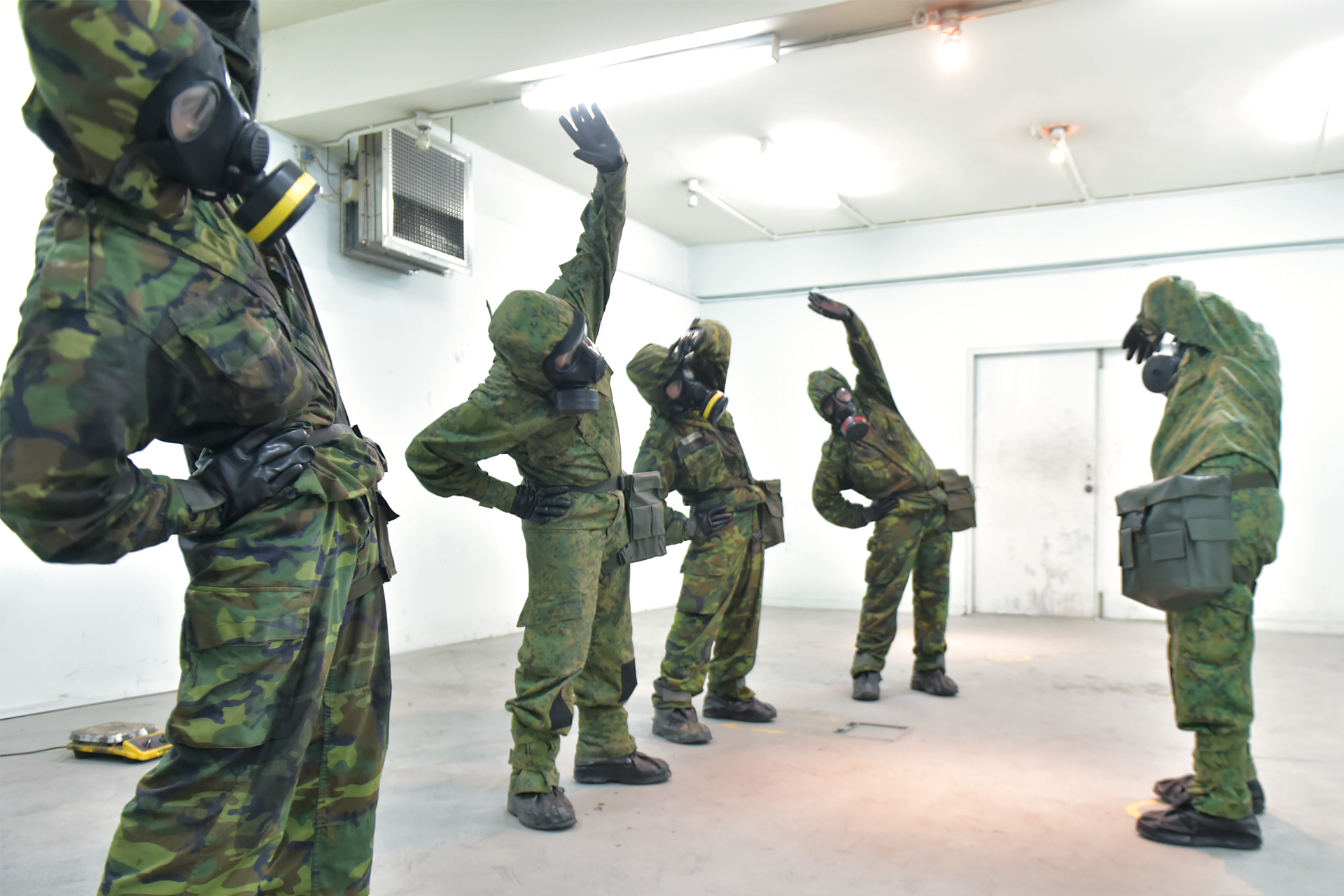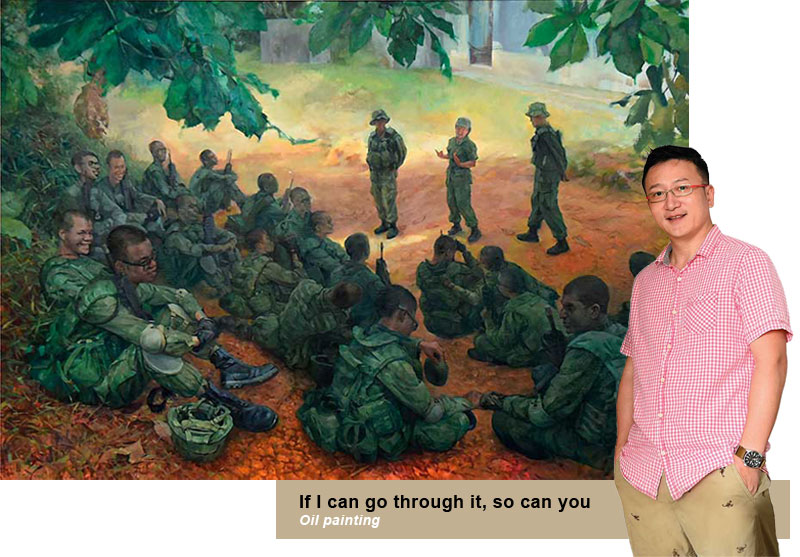THE MAN UNDER THE ARMOUR
How is the Singapore Armed Forces (SAF) helping national servicemen to become better soldiers and maximise their National Service (NS) experience?Story // Benita Teo
Photos // Chai Sian Liang, Kenneth Lin & courtesy of 3 SIR & HQ TRADOC
"Big man in a suit of armour. Take that off, what are you?" If Captain America were to have this conversation with the SAF, what would the answer be?
It's easy to marvel at the towering platforms, cutting-edge weapon systems and state-of-the-art technology. But at the heart of the SAF is still its largest and most valuable asset - its soldiers.
And with a sizable proportion of them being national servicemen, a group that 2nd Minister for Defence Ong Ye Kung calls a "most precious resource", it is even more crucial that support is given to keep them ever ready and fighting fit.
"Our well-trained and committed national servicemen increase our military capability and give us credibility when we speak. Potential adversaries know that if they attack Singapore, it is a fight against a populace all trained and ready to defend our sovereignty and our freedom," Mr Ong said in his Committee of Supply (COS) Debate speech in March.
As Singapore celebrates 50 years of NS this year, the SAF is also working to enhance the NS experience for its national servicemen. Here's a look at the initiatives that aim to strengthen soldiers in body, mind and spirit, and measures to tap on their talents and allow them to contribute more to the defence of the nation.
Stronger soldier, stronger SAF
The SAF soldier is "Ready" to take on the rigours of the battlefield, "Decisive" when determining difficult but important courses of action, and "Respected" for his commitment to the nation.
To reinforce these values in national servicemen, the SAF introduced the Soldier Strong initiative. The framework is a revised training programme that focuses on three aspects: Strong Body, Strong Mind and Strong Heart.
It was first announced by Chief of Army Major-General Melvyn Ong in his 2016 SAF Day media interview: "We value every serviceman who comes to us. And we want to produce soldiers who (have a) strong body, strong mind and strong heart."
Fitter, stronger body
One of the first requirements of a soldier is a high level of fitness to survive the war zone. However, the SAF soldier of the future is one who is not only physically fit, but also able to fulfil the operational tasks of his vocation and sustain for longer periods in the field by remaining injury-free.
The four-week Vocational Fitness Training (VFT) programme was introduced to help soldiers strengthen specific areas to meet their vocation's operational requirements.
"While Basic Military Training (BMT) offers broad-based training to condition recruits from civilians, in VFT we start to focus on specific fitness components and movements to make sure they can handle the rigours of vocation training," Captain (CPT) Bani Faizal Mohamed explained. As Head of Fitness Development at the Army Fitness Centre (AFC), the 34-year-old was one of the developers of the Strong Body training programme.
The VFT will be carried out in the units before their respective vocation training. Each VFT curriculum is unique to the various formations.
For example, engineers will focus on developing full-body strength through exercises such as the farmer's walk and shoulder press. This will help enable them to lift and carry heavy equipment.
On the other hand, infanteers can expect more emphasis on speed and agility training to improve their manoeuvrability in the field.
"The philosophy is to 'train as you fight'. Training is now more purposeful, targeted and smarter," explained CPT Bani.
Training for the field
The 3rd Battalion, Singapore Infantry Regiment (3 SIR) was one of the first units to undergo the VFT programme. The unit underwent training in December last year, which comprised physical training, functional training, combat training and active recovery.
As infanteers, they will be expected to move stores such as ammunition boxes and jerry cans, as well as carry injured buddies - all while donning a Skeletal Battle Order (SBO) with hard and soft plates that can weigh up to 16kg. Thus, their VFT programme was designed to prepare them for this.
"A challenge many troopers face is CASEVAC (casualty evacuation). The stretchers can be very heavy, so during VFT they were introduced to more squats to strengthen their legs. We did dead lifts as well for strength training - these simulate carrying ammo boxes.
"This was one of the things we considered when deciding the exercises to do in the programme," said 3rd Sergeant (3SG) Ryan Loi, a Man-portable Anti-tank Commander. As a certified Basic Combat Fitness Trainer (BCFT), the 22-year-old Full-time National Serviceman (NSF) helped to plan the training modules for his unit. Although VFT was not yet a part of his infantry training in mid-2016, he underwent the training together with the new infanteers after it was introduced. The BCFT is an important enabler of the VFT programme. Instead of relying solely on external fitness instructors, selected commanders within the unit attend a two-week BCFT course in Pasir Laba Camp, conducted by the AFC's School of Physical Training, where they undergo theory and practical sessions on the new fitness modalities. This qualifies them to plan and lead their unit's fitness programmes.
"Having instructors who are commanders organic to the unit is beneficial. We tie our fitness training to our combat requirements, so that training is more intent-driven. We apply a lot more science to the training as well, so we require less training to achieve what we used to 10 years ago," said CPT Arthur Tong, 30, Officer Commanding of Bravo company, who is also a BCFT.
VFT has led to a marked difference in the troopers' fitness levels, observed 3SG Loi. "After the VFT programme, we could see that they didn't struggle as much in field training, and it was easier for them to carry their weapons and field packs."
"They've also managed to receive their Combat Skills Badge (CSB) already. Usually it's done in the second year of NS, but they did it after VFT, during the Infantry Vocation Training," he added with a tinge of pride. To achieve the CSB, infanteers have to complete a gruelling 32km walk in Full Battle Order and overcome water obstacles, before ending off with a live firing.
The outcome of VFT is also reflected in the unit's Vocation Obstacle Course (VOC) and Individual Physical Proficiency Test (IPPT) results. Said CPT Tong: "When the journey is good, the results show. There's an improvement in fitness, from the IPPT and VOC results."
Reducing injury
Better knowledge of body movement also ensures that soldiers know how to keep themselves safe and avoid injuries during training and operations.
3SG Loi noticed how the techniques taught during VFT were applicable to the infanteers during outfield training.
"When training with weights, there is a proper form, like keeping the back straight and positioning the wrist correctly when carrying dumbbells. This knowledge is also applicable outfield when carrying heavy loads. If they carry things with the wrong posture, they can get injured."
CPT Tong agreed: "They know techniques to sustain themselves, so you can see the results when they are out in the field. The guys last longer because they are stronger."
A culture of fitness
Beyond endurance in the field, Strong Body hopes to create a fitness culture and love for sports among all soldiers. And with training becoming more varied and purposeful, it looks like the idea has taken root.
In 3 SIR, the infanteers have begun to work out together in their free time. With better knowledge of the different equipment, they have also become more confident in doing weights training and spotting each other in their exercises.
"They are definitely more enthusiastic about sports, compared to my own batch in Army. For us, exercise was just something we had to do," 3SG Loi recalled. "Now, you just need one guy to initiate something and everyone will join in."
CPT Tong added: "The VFT syllabus introduces more interesting fitness modalities. The guys enjoy doing it more and look forward to the next session."
Resilient and adaptive
To help soldiers stay calm and focused on the battlefield, Strong Mind aims to hone their skills in Psychological Resilience and Adaptive Soldier Training.
Psychological Resilience training begins in BMT, where recruits are taught Self-Regulation (SR) skills. These are techniques that help them to adjust mentally in difficult situations. Orientation Officers, Defence Psychologists and senior Warrant Officers and Specialists will be on hand to teach ways to cope with stress and anxiety and frame problems positively.
Through their two years in NS, soldiers will be progressively and systematically exposed to strenuous training scenarios to strengthen their psychological resilience. They will also have to apply their SR skills in simulated scenarios of failure. This training will also be incorporated in In-Camp Training (ICT) to hone their skills in this area.
Adaptive Soldier Training helps soldiers to adjust and react swiftly in the face of unexpected changes to successfully complete their missions. Three methods have been enhanced and incorporated in the training curriculum to help hone soldiers' mental agility.
The first, Guided Scenario-Based Training, presents soldiers with scenarios with unexpected injects. When some of the tactics and techniques they learnt previously cannot be applied, they will have to think out of the box instead. This method will be used in settings such as live battle circuits, simulation training and classroom-based discussions, where instructors will guide them through their thought processes.
The second is Assisted Red Hat Training, where soldiers will take on the role of the enemy (Red) and devise methods to defeat their opponents (Blue). Having exercised many possible enemy scenarios, they will be able to react faster when a similar situation arises.
The third, Facilitated Force-on-Force, will pit platoons and sections against one another. Soldiers will have to find creative means of outwitting and outmanoeuvring their opponents to emerge victorious in "battle".
A heart for the nation
A soldier would be less effective if he were well-trained but did not understand his purpose. Thus, a Strong Heart that is committed to the nation's defence and service is essential to an SAF soldier.
To give national servicemen greater ownership of their NS and make their NS experience more meaningful, the SAF has introduced several new initiatives. One of these is the skills accreditation exercise that allows NSFs to have their soldiering skills accredited by the Workforce Development Agency.
Through the exercise, soldiering competencies reflecting the leadership, technical and specialist skills acquired during NS are matched to respective industrial domains under the Singapore Workforce Skills Qualification (WSQ) framework. This gives NSFs professional recognition for their skills, which they can use when job-hunting after NS.
Another initiative launched last November allows pre-enlistees to indicate their interest in various NS vocations from across the SAF, Singapore Police Force (SPF) and Singapore Civil Defence Force (SCDF), as part of their pre-enlistment process. "The intent…is to encourage greater ownership of our servicemen in the roles that they will play during NS. It also aims at providing a more positive NS experience for our servicemen," explained Colonel (COL) Yew Chee Leung, who is Assistant Chief of the General Staff (Personnel).
There are 33 vocations presented for indication of interest - 15 from the SAF grouped into three categories, 10 from the SPF in two categories, and eight from the SCDF in two categories. Pre-enlistees can make their selection with the Manpower Aptitude Assessment System when they undergo their medical check-ups at the Central Manpower Base (CMPB).
While deployment will still be based on considerations such as manpower and operational requirements as well as physical fitness and suitability to perform the requisite tasks, the interests of pre-enlistees will now play a role as well.
Patrick hopes to serve his NS in the medical corps so he can improve his skills and knowledge as a first-aider.
I can play a part!
New breed of defenders
NSFs and Operationally Ready National Servicemen (NSmen) with specialised skills in Information Technology (IT) and cyber and digital technology will now be able to contribute even more to Singapore's defence.
With threats moving from the physical battlefield to cyberspace, a new line of defence must be set up to guard against these new dangers. In March, it was announced that MINDEF and the SAF would stand up a new cyber command called the Defence Cyber Organisation (DCO).
The DCO comprises four formations across the Ministry of Defence (MINDEF) and SAF: the Cyber Security Division, Policy and Plans Directorate, Cyber Security Inspectorate, and Cyber Defence Group (CDG).
Of the four formations, the CDG is responsible for the 24/7 cyber defence of the SAF's military networks. Its two operational units conduct round-the-clock monitoring of the SAF's networks and coordinate cyber defence responses. Its Cyber Defence Test and Evaluation Centre (CyTEC) provides facilities for network security testing and cyber defence tool evaluation, as well as training and exercises.
New cyber defence vocations have also been created for national servicemen and will see selected soldiers deployed into these vocations from August. The DCO aims to select, train and deploy up to 2,600 cyber defenders over the next 10 years.
In his COS speech, Mr Ong noted: "The impact is not just on the few selected for the vocation, but will heighten the interest and expertise in cyber and digital technology across the student masses. This will also increase the talent pool for national defence as well as Singapore's growing cyber industry."
Enhanced cyber defence training
While most NSFs and NSmen come with some IT background, cyber defenders will be selected on a case-by-case basis.
"It's good if they have the skill set, especially if they are working outside," said Cyber Defence Ops Hub (CDOH) Cyber Security Analyst Military Expert (ME) 2 Ong Wee Keat, 28, who is also an instructor at CyTEC. "Some may have encountered even more advanced threats in their work. Through their sharing, we can enhance our existing processes and improve our systems."
NSFs who are deployed in the new cyber defence vocations will undergo a training programme to learn about the SAF's Internet-facing and internal networks and systems. They will also learn to utilise cyber defence tools like intrusion detection and protection systems.
Upon completion of training, these servicemen will be deployed in various roles, such as Security Operations Centre monitoring, Incident Response and Forensic Investigation.
To further enhance MINDEF and the SAF's cyber defence training, Headquarters Signals and Command Systems signed a cyber defence training Memorandum of Understanding (MOU) with Singapore Technologies (ST) Electronics (Info-Security) and Nanyang Polytechnic (NYP) on 14 Mar.
"To achieve a robust cyber defence training ecosystem, the SAF Signal Institute will forge strong partnerships with the industry and the academia to harness our collective strength to develop a customised cyber defence curriculum, to nurture competent cyber defence professionals for the SAF, and for Singapore," said Chief Signal Officer Colonel (COL) Rajagopal at the MOU signing.
The MOU aims to foster collaboration in six key areas
1. Provide specialised courses that are internationally accredited and in line with industry benchmarks
2. Develop customised cyber defence curriculum for MINDEF and SAF personnel
3. Arrange industrial attachments
4. Collaborate in research and development
5. Develop professionals
6. Facilitate information sharing
New ways to serve
The newly established DCO builds on past efforts to defend MINDEF and the SAF's networks and systems. For instance, the Computer Security Monitoring and Investigations Centre (COSMIC) has been around since 2000, while the CDOH was set up in 2013.
Corporal (CPL) (NS) Pishu Mahtani was one of the pioneer NSFs in COSMIC. As an analyst, his role was to study cyber attack trends online and prepare advisories and guidance documents for staff to pre-empt such attacks on MINDEF and SAF networks. This includes the Mydoom email worm that infected computer systems in 2004.
Currently a consultant with cyber security firm Trustwave SpiderLabs, the 36-year-old felt that his experience in COSMIC helped pave the way for a career in the industry. An engineer by training, he enjoyed the challenge of finding solutions to cyber security problems.
"I thought it would be good to do this as a career, and I already have the training. So when I left COSMIC I looked for roles in which I could use my skills. The NS experience gave me a good grounding."
At the same time, he was also able to contribute his industry experience when he goes back for ICT.
"Most of us (NSmen) are from the industry, so it allows us the opportunity to give back to COSMIC in the form of process improvement activities and other areas that can be improved."
As for CPL Sim Tian Quan, the IT graduate from Singapore Polytechnic was not expecting to serve his NS as a Cyber Security Ops Centre Operator in CDOH.
However, one-and-a-half years in, he has come to appreciate the opportunity.
"Your studies don't give you real life experience, whereas in NS you get industrial experience and can practise what you learnt. It's definitely fulfilling, because what we do are real operations, and our actions have effects," said the 22-year-old.
For future NSFs who will be taking on the role of cyber defenders, CPL Sim had this to say: "This vocation definitely does not lose out in terms of other military operations. Our operators need to be highly skilled in different areas, in addition to being combat fit.
"This is where we can show our skills and talents. And as we are evolving into a more sophisticated technological era, we definitely need this as part of our defence."
